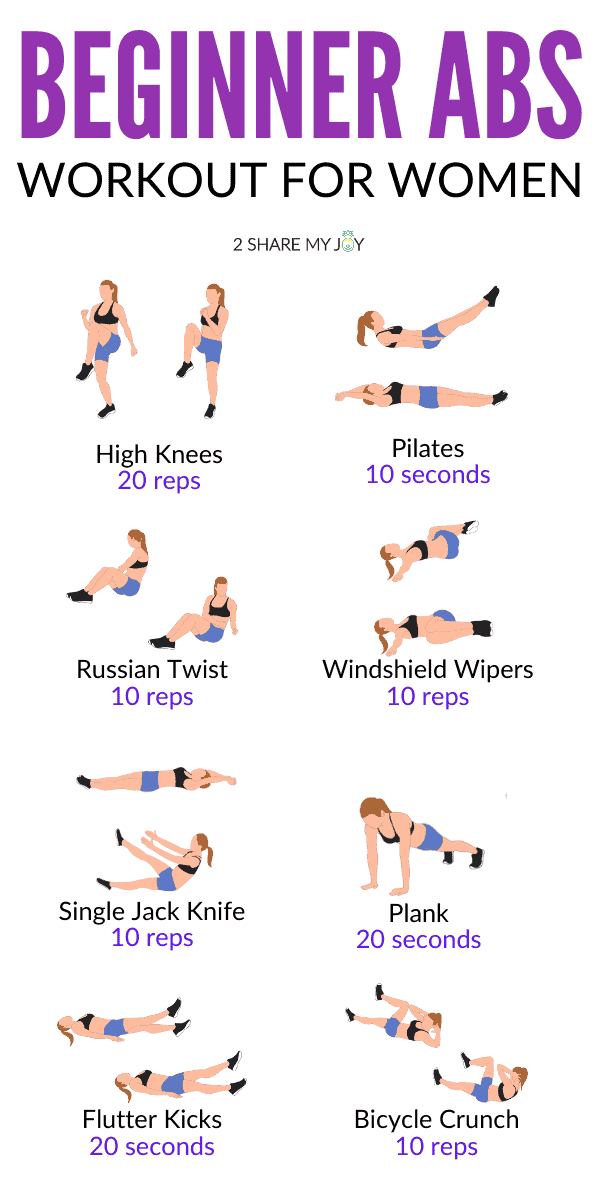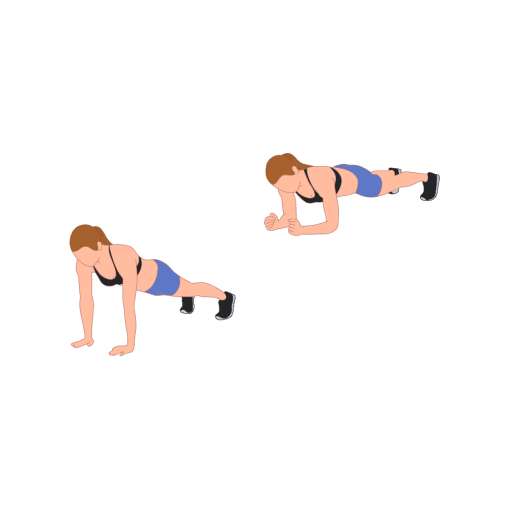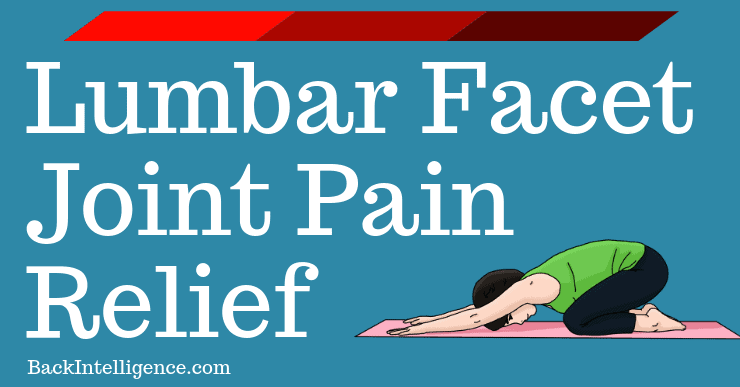
Lumbar Facet joint syndrome can be a significant source of lower back pain, accounting for 15% to 45% of lower back pain
While lumbar facet joint syndrome cannot be reversed, research has shown that exercise, certain lifestyle changes, and management of back pain with conservative treatment methods, including rest, ice, heat and over-the-counter medications, can help to control symptoms and improve quality of life.
Here’s an image showing the Facet joint where the pain happens at the back of your spine:
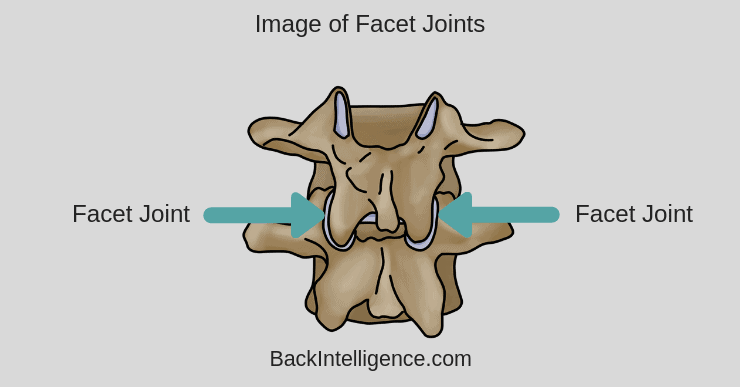
Symptoms of Facet Joint Pain Syndrome
-Widespread, achy back pain (affecting one/both sides of body) that radiates to one or both buttocks, sides of the groin, and thighs, and stops above the knee.-Pain may be chronic or come and go.-Pain is worse from spinal extension (leaning back) and lateral (side) flexion to the affected side (leaning to the side of the affected facet joint).-Pain and tenderness to palpation of the affected area.-Prolonged periods of inactivity and standing can worsen pain.-Pelvic and abdominal pain may be present.
Certain movements that take pressure off of the affected facet joint, such as leaning forward (flexion), or towards the healthy side, as well as changing positions can ease pain.
Causes of Lumbar Facet Joint Pain
Facet joint degenerative osteoarthritis is the most common form of Facet joint pain. It is the result of degenerative changes to the joints that are located between the bones of the spine, known as the facet joints. This condition is often (not always) tied to the degenerative changes of the spine’s intervertebral disks.
The cartilage inside the facet joints can break down, leading to joint space narrowing and inflammation, which can trigger pain signals in the surrounding nerve endings; the muscles in the area then stiffen and spasm, leading to typical symptoms of lumbar facet joint syndrome.
Risk factors for Lumbar Facet Joint Pain
Conditions that change the alignment and movement of the facet joints in the lumbar spine can increase the risk of lumbar facet joint syndrome. These conditions include:-Overuse Injuries (i.e. traumatic fall, sporting injury, etc)-Obesity.-Poor posture and movement (i.e. excessive lumbar lordosis, kyphosis, etc.).-Spinal conditions (i.e. scoliosis, kyphosis).
Treatment for Lumbar Facet Joint Pain
The approach to treatment of cervical facet joint syndrome is typically conservative, and includes:-Resting to allow the facet joints to relax and reduce inflammation.-Applying ice to the affected area in 10 to 15 minute intervals to help reduce inflammation.-Stretching and strengthening exercises (Physical Therapy).-Core exercises to help achieve good spine alignment and posture.-Posture/Ergonomics education to keep the facet joints in alignment and reduce unnecessary pressure on the affected facet joints.-Medications, such as non-steroidal anti-inflammatory drugs (NSAIDs) or muscle relaxants, to ease muscle spasm in the muscles surrounding the affected facet joints.-Behavioral therapy
3 Exercises For Facet Joint Pain Relief in Low Back:
Please try the following at your own discretion. If you feel more pain from these exercises, then you should seek medical help.
In many cases, lower back pain caused by facet joints can mimic other conditions such as herniated discs and compressed nerve roots. If conservative treatment methods fail to reduce symptoms, consider consulting with a physiotherapist or chiropractor to determine if something else is causing your symptoms.
Exercise #1: Child’s Pose
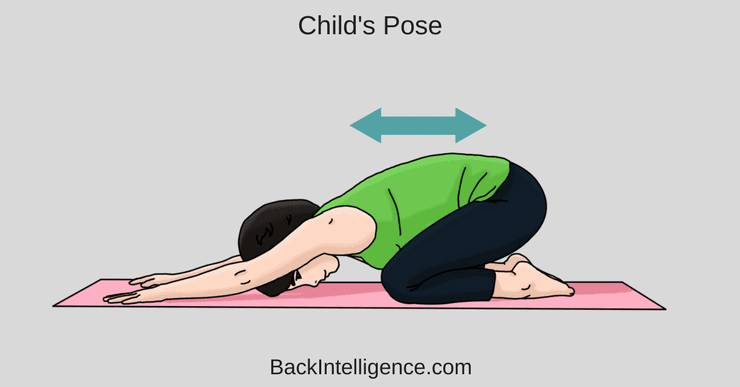
How it helps:
It helps to relieve pressure on the facet joints.
How to do it:
– Begin by positioning yourself on the floor on your hands and knees with your knees slightly wider than your hips.
– Turn your toes inwards to touch and push your hips backwards while bending your knees.
– Once you’re in a comfortable position, straighten your arms forward and allow your head to fall forwards into a relaxed position.
– Hold this position for 20 to 30 seconds.
– Slowly return to the starting position.
– Aim for 3 repetitions.
Exercise #2: Pelvic Tilt

How it helps:
It helps to strengthen the muscles of the lower back and abdomen.
How to do it:
– Begin by lying on your back with your feet positioned flat on the floor.
– Inhale and then exhale while you draw in your abdominal muscles and push your belly button towards the floor as your try to – flatten your lower back.
– Hold this position for 5 seconds.
– Aim for 10 repetitions of this exercise.
Exercise #3: Plank
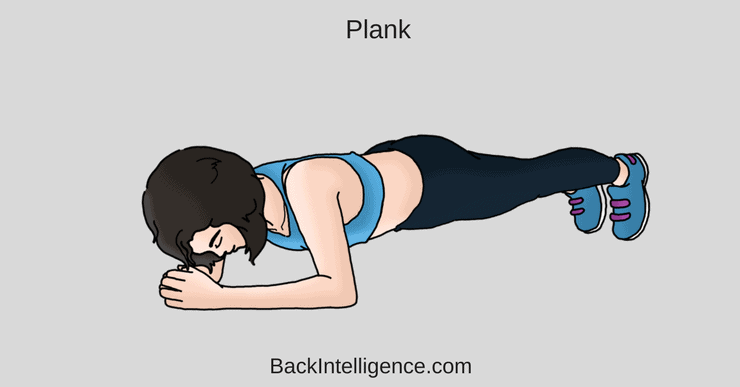
How it helps:
It helps to strengthen the core and butt muscles which will help improve your posture and alignment.
How to do it:
– Begin lying on your stomach with your forearms against the mat.
– Engage your core and lift your body so that you are resting on your forearms and toes.
– Hold the plank position for 30-60 seconds.
– Aim for 2 to 5 repetitions of this exercise.
– When you’re ready, increase the intensity by increasing the time you hold the plank in 10 second increments.
** Ensure to keep your back straight throughout the entire exercise.
In many cases, lower back pain caused by facet joints can mimic other conditions such as herniated discs and compressed nerve roots. If conservative treatment methods fail to reduce symptoms, consider consulting with a physiotherapist or chiropractor to determine if something else is causing your symptoms.
Watch Video On This Topic:
Sources:
[1] Perolat R, Kastler A, Nicot B et al. Facet joint syndrome: from diagnosis to interventional management. Insights Imaging. 2018;9(5):773-789. doi:10.1007/s13244-018-0638-x
[2] Binder D, Nampiaparampil D. The provocative lumbar facet joint. Curr Rev Musculoskelet Med. 2009;2(1):15-24. doi:10.1007/s12178-008-9039-y
[3] Saravanakumar K, Harvey A. Lumbar Zygapophyseal (Facet) Joint Pain. Rev Pain. 2008;2(1):8-13. doi:10.1177/204946370800200103

